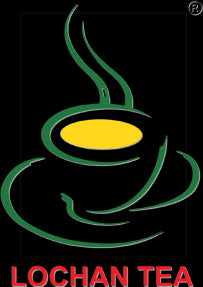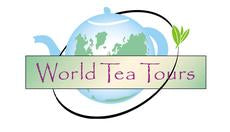
by Dan Robertson
We all know that water is an essential component of our tea drinking experience. No matter how much care or effort goes into the manufacture of the leaves we use, the water we brew them in gets the final say on how everything comes out. There is however, no accounting for preferences in taste. If you are used to hard water then you may like tea brewed in it. In Kolkata, where much of India’s teas are tasted and evaluated by large tea brokers and agents, the water is relatively soft.
On a recent trip to the Rivera Maya for a top-secret tea mission (stay tuned for more on this when the time comes),  I learned about the famous cenotes of the Yucatan peninsula. If you have yet to learn about this topic first hand, it is a very interesting feature of the native geology. Without getting too technical, a cenote is an underground cavern or cave that has been eroded over millions of years. Many are filled with fresh water, some so deep and extensive that one can scuba dive through miles of the subterranean rivers. It is estimated that there are more than 6000 cenotes in the Yucatan.
I learned about the famous cenotes of the Yucatan peninsula. If you have yet to learn about this topic first hand, it is a very interesting feature of the native geology. Without getting too technical, a cenote is an underground cavern or cave that has been eroded over millions of years. Many are filled with fresh water, some so deep and extensive that one can scuba dive through miles of the subterranean rivers. It is estimated that there are more than 6000 cenotes in the Yucatan.
Not all are filled with water. Some are caves caused by the surface collapsing into a sinkhole. On one excursion, I was guided to a few smaller ones by friend Alberto Rivero, owner of the La Chula Hacienda in Paamul. Playing in them since childhood, Alberto explained how they were used by the Mayan people and that the water from the cenotes was their source for precious fresh water. Being the crazy tea man that I am, I wondered what tea would taste like if brewed in this water. Eventually, I asked if it was safe. Alberto assured me that it was safe and that the water was quite clear. So, I collected some  from the little pool that we found and took it back to the hacienda. In the daylight, I could see that it was indeed quite clear with no particles or visible organic matter floating around. As the water has been filtered through the limestone rock, I expected it to be a bit hard.
from the little pool that we found and took it back to the hacienda. In the daylight, I could see that it was indeed quite clear with no particles or visible organic matter floating around. As the water has been filtered through the limestone rock, I expected it to be a bit hard.
The following day I set up a table and my traveling gaiwan set in a nice spot by the beach. I boiled the water then let it cool to about 170 F. The tea I wanted to try is a personal favorite of mine, the Kenya Hand-Rolled, a tea which the factory calls a white tea but it is clearly a black tea. (robertsontea.com/products/kenya-hand-rolled). I’ve tasted
this tea in Japan, India and China and I brought some along on this sojourn so it seemed a likely candidate. The taste is light but full and has both fruity and floral notes. The aroma is similarly complex. Using short brewing times and a bit more leaf, it really brings out the layers of each infusion.
The Yorkshire Tea company (among others) makes a tea blend specifically for hard water. On their website it states that, “Hard water … has filtered through rocks, like limestone, picking up calcium and minerals on the way. So the water is ‘denser’ and creates more residues caused by polyphenols in tea reacting with calcium.” Hard water can reveal flaws or undesirable elements in the tea so there can be something to learn by testing a tea in hard water.
 I am happy to confirm their assertions. Although a bit disappointed that the taste of one of my favorite teas did not amaze me, I could still tell it was that tea, albeit a bit flat and not as ebullient in its flavor. The color was still bright, though a bit darker than I’m used to. The aroma, I’m pleased to say was still as indicative of this special tea as always. This reminded me to remember to appreciate the fragrance of the leaves in addition to the infusion. So, while I’m still in love with the Riviera Maya and the Yucatan cenotes, I think I’ll use a different water the next time I make this tea. “On the rocks” has a different (more concrete) meaning now rather than just ice cubes in my glass of tea. Agrrgh. Sorry for the bad pun but I couldn’t resist.
I am happy to confirm their assertions. Although a bit disappointed that the taste of one of my favorite teas did not amaze me, I could still tell it was that tea, albeit a bit flat and not as ebullient in its flavor. The color was still bright, though a bit darker than I’m used to. The aroma, I’m pleased to say was still as indicative of this special tea as always. This reminded me to remember to appreciate the fragrance of the leaves in addition to the infusion. So, while I’m still in love with the Riviera Maya and the Yucatan cenotes, I think I’ll use a different water the next time I make this tea. “On the rocks” has a different (more concrete) meaning now rather than just ice cubes in my glass of tea. Agrrgh. Sorry for the bad pun but I couldn’t resist.














